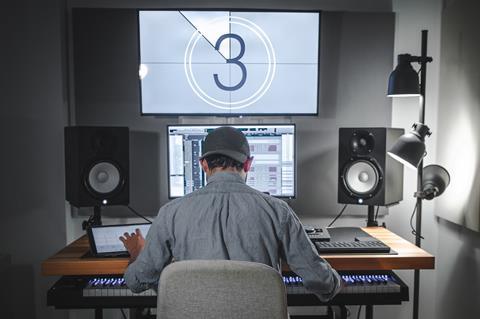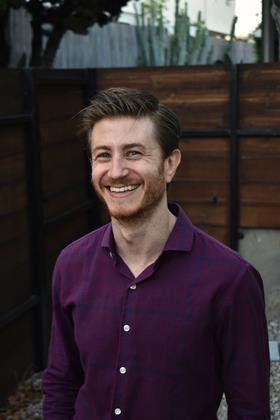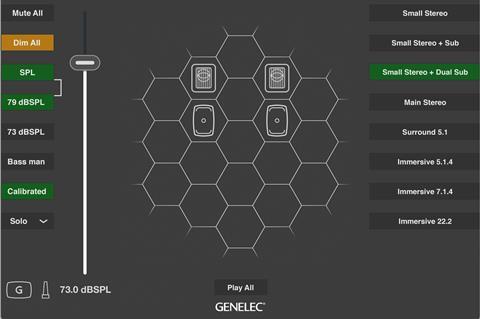While some projects have been delayed or downscaled, many audio post houses have kept up a busy schedule despite the sudden – and substantial – increase in remote working.

It’s arguable that audio post was going through something of a golden age before the pandemic struck. Not only was the sector benefiting from the sharp rise in production resulting from the growth of the OTT/VOD sector, it was also starting to benefit from new revenue streams related to immersive audio. From brand new content to the re-invigoration of archive material, Next Generation Audio had been generating considerable excitement in post circles.
Then the crisis began and, in many cases, post houses had to shift the emphasis of their operations to the home over night. “Like many people, I expect, our initial reaction was to gulp and ask ‘what are we going to do now?’” recalls Rich Evans, owner of Bloomsbury-based audio post firm Syncbox.
“It was a case of everyone grabbing what equipment they could and then working in their bedrooms or lounges on laptops or desktop computers, with customers being dialled-in via Zoom for edits, directions and sign-offs.”
While acknowledging the initial operational challenges brought by lockdown, Evans’ observation that “we were able to find ways of working that allowed us to continue” appears to apply for large swathes of audio post. Although there can be no substitute for in-house facilities such as a well-designed voiceover booth, a blend of quick thinking and innovative solutions has enabled huge amounts of work to take place remotely through multiple lockdowns.
- Read more: Keeping sport on air
‘Things can take a lot longer’
With a strong presence in voiceover for radio, podcasts and TV, it’s no surprise that enabling good multitrack recording of vocal contributions was a top priority for Syncbox as it adjusted to the new reality. “We did have to buy and send out some good quality USB microphones, as well as add subscriptions for several recording solutions depending on who was doing what and connecting with whom,” explains Evans. “Ultimately, we ended up using [browser-based live recorder] Cleanfeed quite a bit as it supports multitrack recording and allows you to have as many people online as your bandwidth can handle.”
“If this trend continues then I think there might be a need for greater file sharing and remote sessions with low latency,” Adam Lebowski, Avid
This has proven especially useful for Syncbox as it regularly works on projects involving large and/or complex cast recordings.
The company’s involvement with long-running BBC Radio 4 satirical comedy Dead Ringers is a case in point. A production that would normally revolve around a 40-minute live recording in the BBC Radio Theatre now has to be achieved remotely. A four-hour record on a Thursday is the norm with cast members having to send in their own local recordings as backup. Editing on the Friday tends to take around six hours ahead of delivery to the BBC for transmission at 6.30pm.
Hence one of the primary consequences of audio post during the pandemic has been that, as Evans remarks, “you have to be prepared for things to take twice as long!” Subsequent to a total shutdown of its facilities during the first lockdown, Syncbox has resumed some on-site activities, but Evans expects the present more “hybrid-type” of working to continue for the foreseeable future.

Alistair Bolt, sound engineer at audio post house SNK Studios, also reports the successful continuation of a varied workload – “from ADR for TV shows to long-form voice recordings” – despite increased remote working as a result of lockdown. Increased VOs and client contributions at distance were nothing new “as we had always been set up to deal well with clients and voiceovers who have the ability to dial in [to sessions],” he says. “We did shut our doors during the first lockdown, but were able to jump in cabs with the essentials and then carry on working at home on the projects that were continuing.”
Like Syncbox, Avid’s Pro Tools remains the bedrock of SNK’s audio post operations, while the company has also made extensive use of the aforementioned Cleanfeed. “We have always worked with a lot of voice artists who can work effectively from home,” says Bolt, adding that VO work on a wide range of content went on without interruption.
As the pandemic continues, the general approach remains that “if we can avoid travel and still maintain the same standard of work [operating from home] then that’s great.” But he does acknowledge that communication with the client can be impeded if internet connections are poor, while there may be some project types that will always benefit from having everyone together on-site: “Nothing is impossible this way, but I think that when you are working on a project where, for example, there is a lot of sound design and plenty of input from creatives, [working at distance] does tend to take longer.”
Creativity and customisation
As the provider of a software system that has long been used for collaborative projects involving distanced participants, Avid has not needed to make any dramatic technological moves to support more remote post using Pro Tools. But it has taken a number of practical steps to help customers affected by the pandemic, including free 90-day licenses to enable users to work from home, and a guide to file transfer services which integrate with Pro Tools.

Adam Lebowski, product marketing manager of audio solutions at Avid, also indicates that increased remote working may inspire future updates: “If this trend continues then I think there might be a need for greater file sharing and remote sessions with low latency.” Given that ideas of best practice about remote audio post will doubtless evolve, Lebowski also anticipates “more ways to extend expandability, scalability and customisation. I also envisage features that support of more a hybrid approach, in which some work is done remotely and some takes place [at post facilities].”

Howard Jones, PR director of loudspeaker company Genelec, says that while there has been an increase in home-based audio post work, it does “seem to be dependent on each country’s local Covid situation. So we can point to examples in the US and UK, for instance, whereas in APAC regions such as Korea the effect is less discernible.”
A hybrid approach that allows companies to deal with multiple scenarios is by no means uncommon, however. For example, RH Factor Sound in the US – run by Craig Hunter and David Rawlinson – has “set-up at home to prepare more of the editorial material and pre-dub (mix) remotely, [but can then] take that material to ‘final’ in a traditional studio environment as necessary. To do that they get Covid-tested, as per Disney’s protocol, then get masked up for the final dub stage.”
Genelec has seen continued demand for compact nearfield monitors like the 8320 and 8330 Smart Active Monitors, which can be optimised via its GLM software “for any acoustic space that they’re located in. So anyone opting for a remote working space can install and calibrate our monitors, knowing that they can then produce truthful, reliable mixes even in challenging acoustic spaces – and these mixes will translate seamlessly to any on-site studio.”
The company is also providing an online help-desk whereby customers can submit GLM calibration files and a picture of their room, allowing them to return the file having adjusted the calibration to address any particular issues. Jones adds: “In some cases we’ve done this in real-time via Zoom so we can get a better view of the room and remotely calibrate the system for the customer, normally leaving them with a choice of settings that they can evaluate before settling on their preferred choice. Ultimately, the person in the room is still the best judge of when a system is ‘right’.”
The extent to which audio post work has been carried out effectively at distance during the pandemic means that there is now a consensus around the view that (in Jones’s words) “the pre-conceived notions of business models and traditional workflows can no longer be taken for granted”. Whilst the highly collaborative nature of some audio post work for film/TV and commercials will continue to be most fully served by face-to-face sessions, a more fluid and hybridised approach may come to dominate many other aspects of the workload.
























No comments yet